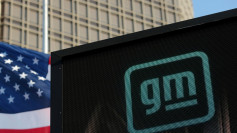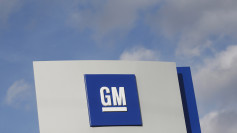General Motors (GM) reported better-than-expected quarterly results on Tuesday, prompting the automaker to raise its annual forecast and sending shares up 4.9% in pre-market trading. The company's strong performance was driven by stable pricing and demand for its gasoline-powered vehicles, despite challenges in China and with its electric vehicle (EV) business.
GM increased its adjusted pretax profit projection for the year to $12.5 billion to $14.5 billion, up from its previous range of $12 billion to $14 billion. "Our consumer has been remarkably resilient in this period of higher interest rates," said GM Chief Financial Officer Paul Jacobson.
The company's net income in the first quarter rose 24.4% year-over-year to $3 billion, with revenue increasing 7.6% to $43 billion. Adjusted earnings per share of $2.62 surpassed the average Wall Street target of $2.15, while revenue exceeded the expected $41.9 billion.
Despite the strong performance, GM CEO Mary Barra still faces significant challenges in turning around the company's shrinking sales in China and salvaging Cruise, its robotaxi unit. Cruise halted operations late last year after one of its self-driving cars dragged a woman down a San Francisco street, leading to a $1 billion cut in spending on the unit. GM lost $106 million in China in the quarter, which CFO Jacobson noted was less than expected as the company worked through inventory.
GM and its rival Ford Motor are relying on profits from gas-engine trucks to ease investor concerns as they continue to invest heavily in EV development. GM gained more than 3 points of market share in full-size pickup trucks from competitors in the quarter. While the company has not disclosed financial results for its EV business, Jacobson maintained previous forecasts of turning a profit, expecting variable profit to be positive by the second half of 2024.
The automaker's joint venture with LG Energy Solution, Ultium Cells, is ramping up production of battery cells at plants in Ohio and Tennessee, according to Barra. Questions about the market for battery-powered vehicles have increased following EV leader Tesla's layoffs and price cuts across several markets.
GM also announced the completion of the first tranche of its $10 billion stock buyback, which was initiated last year after reaching a costly new labor agreement with the United Auto Workers union.
Looking ahead, GM reiterated its expectation of "positive variable profit" in its EV business in the second half of 2024, tied to a projection of selling around 200,000 to 300,000 EVs by the end of the year. The company anticipates a 60-point improvement in EBIT margin in the EV business from 2023 through 2024 and expects a "mid-single digit EBIT margin" by 2025 when the effect of clean energy tax credits is included.
CFO Jacobson noted that the Cadillac LYRIQ EV is now $12,000 cheaper to produce compared to last year, due to lower battery and module costs, which contributes to the expected improvement in contribution margin for GM's EVs. Barra emphasized that leveraging the strength of the traditional gas-powered business allows the company to grow its EV business over time while still delivering strong margins and cash flows.
In terms of Q1 sales, GM reported a 1.5% year-on-year decline in vehicle deliveries in the US, with 594,233 units sold. However, retail sales were up 6%, and the company claimed to have delivered more vehicles than any other automaker in the US during the quarter. Notable gains were seen in the Cadillac LYRIQ, Hummer EV, and Silverado EV, while the Chevrolet Blazer EV and Equinox EV are expected to contribute to sales in the coming months.





